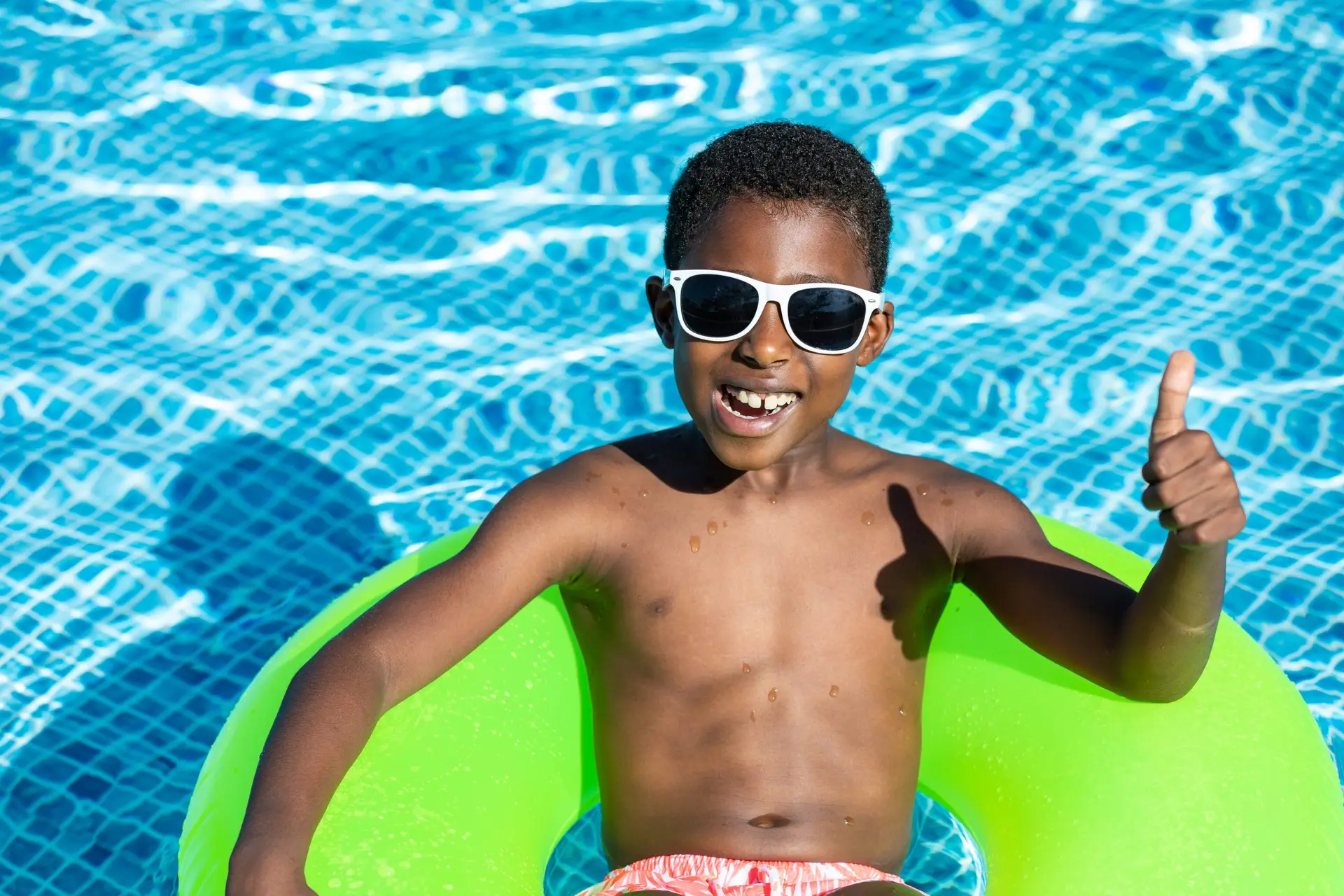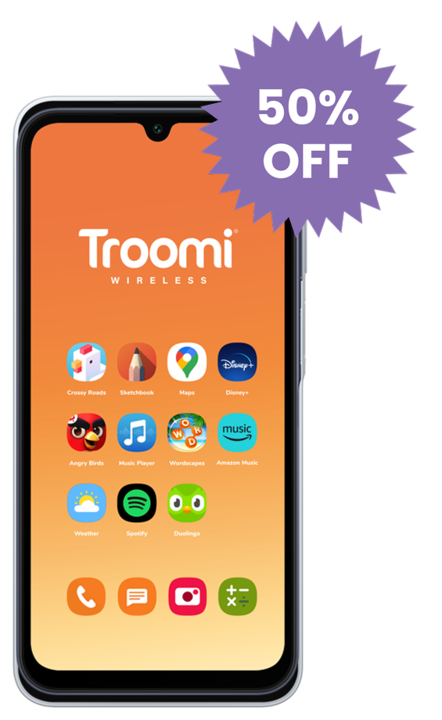Summer is an amazing time for families, especially the precious months with no school. It’s a perfect time to be outside and reduce family screen time. Here’s a summer safety checklist for kids so you can quickly review and get to enjoying this fantastic time of year. Spoiler alert – it’s not just for summer! Make safety a priority all year long with these quick tips:
1. Water Safety
Spending time by the pool, swimming at a lake, or even rafting down the river can all be incredibly fun. Unfortunately, the CDC has found that for children ages 1-14, drowning is the leading cause of unintentional death. Let’s look at how to keep our kids safe in the water.
- Supervise constantly: Watch out for anytime your children are near water. Eliminate any distractions, including your pesky phone. Our kids can drown in an inch of water.
- Life jackets: Always wear a life jacket approved by the US Coast Guard. Swim floaties or water wings aren’t a substitute.
- Dry Drowning: Watch out for post immersion syndrome or delayed drowning (also known as secondary or dry drowning). This happens when a small amount of liquid is present in the lungs. It’s not common but it can still happen.
- Drowning warning signs: Drowning doesn’t look how you’d expect. Keep a close eye on your children and watch for the real signs of drowning. When your children go quiet, that’s a first warning sign. Check on them.
2. Sun and Heat Safety
During summer, the days get longer and the temperature gets warmer. Keeping safe in the sun is an important part of summer safety for kids, but it has its own host of challenges. Let’s look at how we can enjoy the sunshine and longer days while keeping our kids healthy.
- Sunscreen: Protect your child from the sun by using sunscreen that is at least SPF 30 or preferably higher. Make sure it protects against UVA and UVB rays. Reapply it every two hours and after they go into the water. Even use it on cloudy days.
- Time of Day: Between 10 AM and 4 PM the sun’s rays are at their strongest. These hours are the hottest and potentially the most dangerous if you aren’t careful. Take breaks from being in direct sunlight (get in the shade) and use plenty of sunscreen. Remember to hydrate.
- Layers: Sunscreen is effective at protecting kids from the effect of the sun, but not nearly as effective as clothing, hats, and shade. If your child is especially sensitive to sun, have them wear lightweight, light colored clothes with long sleeves and pants, as well as a hat.
- Eye safety: Skin isn’t the only thing that can burn under the summer sun. Make sure to have kids wear hats or sunglasses (or both) to protect their eyes. Make sure those sunglasses provide UV protection (you can find that protection from cheap sunglasses too).
- Drink Water: Staying hydrated is critical in the heat. Even if they aren’t thirsty, encourage your kids to drink water. The amount they drink can vary by age or body, but here’s a link that can help you figure out how much your child needs.
- Never leave kids in the car: The temperature inside a car can increase by 20 degrees in just 10 minutes. Never leave a child inside a car for even a minute.
- Heat Stroke: Learn to recognize the signs for heat exhaustion or heat stroke. Kids can’t cool their body as quickly as adults and are more at risk.
3. Insect Safety
Kids aren’t the only ones enjoying the warmer weather. Bugs, after spending all winter hibernating, are awake in force. Mosquitoes can be more than just annoying though. They can transfer diseases. Ticks, wasps, and spiders are all potential dangers for your kids.
- Bug Spray: Summer is big time bug time. Use bug spray on skin and outside of clothes (bugs can still try to bite through fabric). Never spray on the face but instead spray on your hands and gently rub it on your child’s face. There are a lot of superstitions and misleading information about DEET but it’s safe to use, as directed, on your kids. Use 25-30% deet. Don’t use it on kids younger than two months old.
- Get rid of standing water: Mosquitos love stagnant water. Make sure to clean up any standing water in buckets, pots, or other containers around your house.
- Long sleeves: If there are a lot of mosquitos out, dress your child in long sleeves and pants.
- Tick safety: Hikes and long grass are ticks’ favorite place but ticks are no good for kids. Keep them safe by dressing them in long sleeves tucked into pants and pants tucked into their socks. You can even tape them together. After your hike, or time spent in long grass, check over your child’s body to check for any that might have hidden.
- Don’t throw things at bees: Teach your children safety around bees and wasps. Check under porches and around playgrounds for nests before letting your children play.
- Avoid fragrant soaps and perfumes: Bright clothes and fragrant smells draw bugs like, well, a moth to flame.
4. Injury Safety
The warm weather is a perfect time to go to a park, playground, or teach your kid to ride a bike. Part of summer safety for kids is making sure they know how to be safe while playing.
- Always wear helmets: Whether on a bike, scooter, or playing a high impact sport, your kids should always wear their helmet and the right helmet for the activity. Check their straps to make sure they fit right.
- Right size equipment: Kids can hurt themselves by using equipment or toys that aren’t matched to their size. Oversized bikes are dangerous.
- Check the playground before playing: Playgrounds are a lot of fun but have some surprising hazards. Check the ground around the play toys and make sure it either has safety-tested mats or loose-fill materials (like sand or woodchips). Check to make sure the slide isn’t too hot.
- Don’t play barefoot: Playgrounds, unless completely covered by shade, will get very hot in the sun. Children’s feet can burn easily. This includes artificial turf.
- Road safety: Children shouldn’t play, ride bikes, or other toys on the road. Teach them road safety, including how to safely cross a street. Hold their hand when they are little, or even when they are big.
5. Travel Safety
A lot of families go on trips during the summer, and while these can be exciting memorable times, they can also be stressful for both you and your kids. Here are some travel tips that will help your family make summer safety for kids a priority during travel.
- Proper seat: Children should be properly secured and buckled in a car seat, booster seat, and seat belt (appropriate for their age). Back seat is the safest place for a kid in a car. Kids 12 and under should be in the back seat. One of the most important summer safety tips for preschoolers and younger is to make sure you have a proper seat for your child on an airplane.
- Lock Doors: Car doors should be locked while the car is moving. When you get out of the car, lock the doors. A kid could get trapped inside an empty car.
- Never leave kids in the car: Remember, cars can heat up to dangerous temperatures faster than you’d expect. Don’t leave kids in the car for even a minute. Don’t leave them in a car even while it’s idling as there is a danger for them to put the car into drive. If the car is off, they can get heat stroke.
- Prioritize sleep: If you are traveling, kids may start to be cranky or ornery. Making sure they get enough sleep will help, especially when things may feel new or intimidating.
- Keep things familiar: While it’s tempting to have your kids try new foods in a new place (it’s one of my favorite things), this many new things all at once can be overwhelming. Let them eat something familiar, have a familiar toy, and a familiar routine to help them feel relaxed.
With these safety tips, your kids can focus on enjoying the trip. And check out this article from loveholidays.com to see how travel could benefit your child’s development.
6. Bonus
- Fireworks: Part of summer fun is fireworks but, unfortunately, fireworks can be very dangerous for kids. They can get burns or worse. Substitute sparklers for glow sticks and attend professional shows instead of holding your own.
- Phone check-in: You don’t want to put a phone in your child’s hand when you are so excited about them having summer fun without it, but phones can be a critical way of making sure our kids are safe. Consider adding a Troomi phone to your summer safety checklist for kids. Troomi phones help kids learn how to use a phone responsibly and not prioritize it over the other fun things they have to do this summer.


